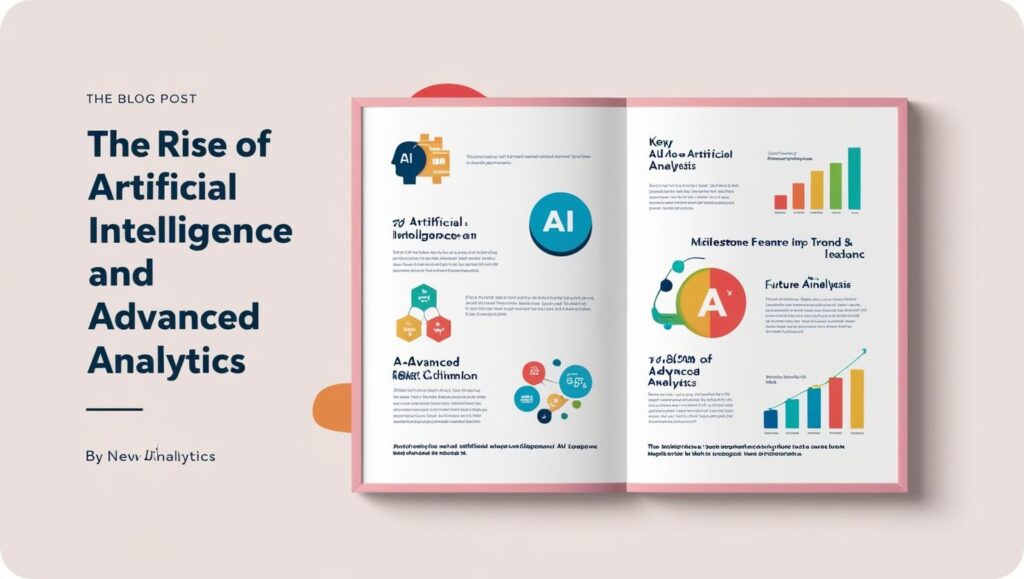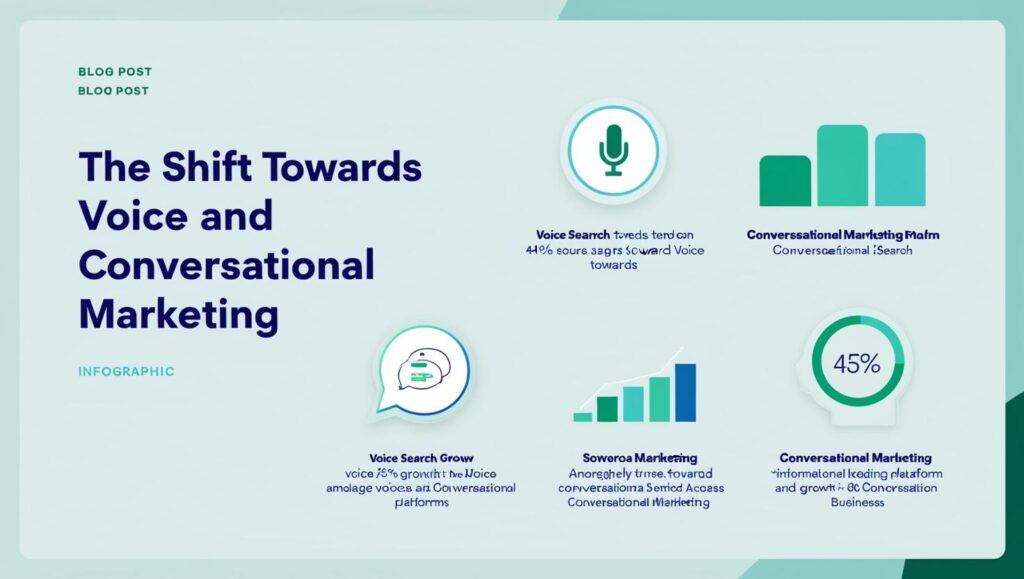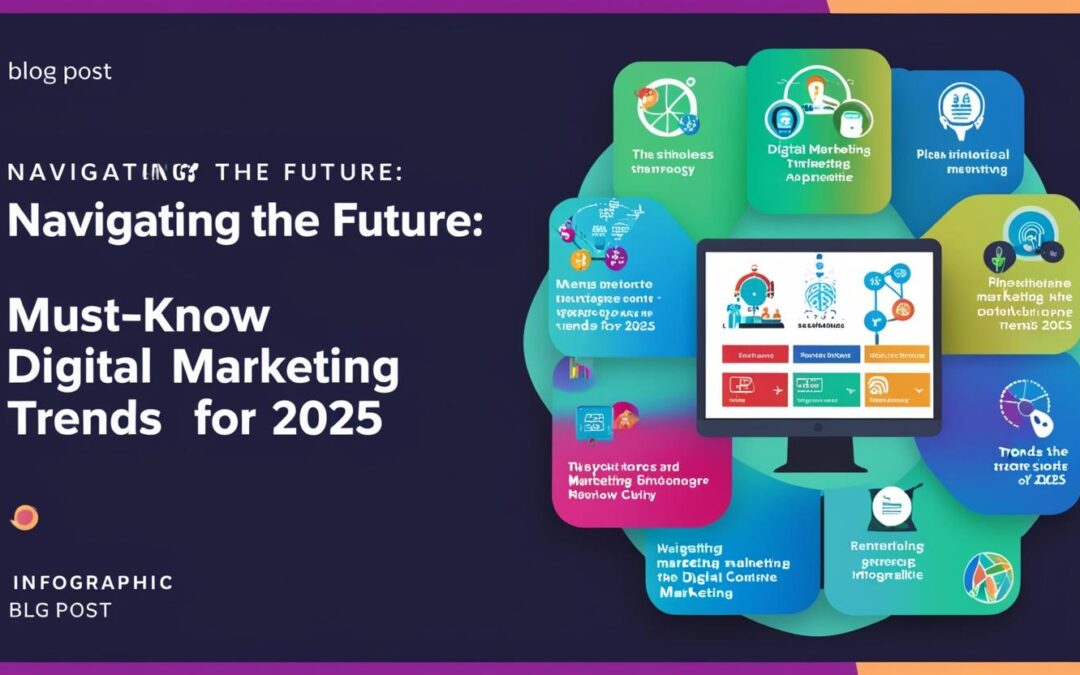Table of Contents
- Introduction
- Key Takeaways
- The Rise of Artificial Intelligence and Advanced Analytics
- Personalization and Hyper-Personalization
- Predictive Analytics for Smarter Decision-Making
- AI-Driven Content Creation and Optimization
- The Shift Towards Voice and Conversational Marketing
- The Role of Conversational AI in Customer Interaction
- Optimizing Content for Voice Search
- Immersive Technologies: AR and VR Integration
- Transformative Potential of AR and VR
- Actionable Strategies for AR/VR Integration
- Evolving Content Strategies
- Importance of Video and Short-Form Media
- Aligning Content with Consumer Preferences
- Emphasis on Personalization and User Experience
- Leveraging Data for Enhanced Experiences
- Incorporating Feedback for Continuous Improvement
- Blurring Lines Between Social Media and E-Commerce
- Social Commerce and Shoppable Content
- Enhancing Social Commerce Strategies
- Adapting to New Search Platforms and Techniques
- Importance of “Zero Click” Searches
- Expanding to Non-Traditional Search Platforms
- Conclusion
In an age where technology evolves at lightning speed, businesses can no longer afford to rest on their laurels. The digital marketing landscape is transforming rapidly, driven by emerging technologies, shifting consumer behaviors, and an ever-growing reliance on data. With 2025 on the horizon, staying ahead of the curve is not just an option—it’s a necessity.
Consider this: how will your business survive if it lags behind in adopting new digital marketing strategies? Just a few years ago, the idea of AI-driven content or voice-activated shopping was considered futuristic. Today, they’re rapidly becoming industry standards. The truth is, that businesses that fail to adapt will find themselves trailing behind their competitors.
This article delves into the key trends shaping the future of digital marketing. It offers actionable insights to help businesses drive growth, enhance engagement, and maintain a competitive edge in an increasingly digital world. Let’s dive into the top trends for 2025 that no business can afford to ignore.
Key Takeaways
Digital marketing in 2025 will be driven by AI-powered personalization, immersive technologies, voice search, and social commerce. To thrive, businesses must:
- Embrace AI for hyper-personalized customer experiences.
- Optimize for voice and conversational AI.
- Leverage AR/VR to create engaging, immersive interactions.
- Prioritize short-form videos and platform-specific content.
- Integrate social commerce features for seamless shopping.
- Diversify SEO strategies to include emerging search platforms.
I. The Rise of Artificial Intelligence and Advanced Analytics
Artificial Intelligence (AI) continues to significantly transform digital marketing, enabling more personalized experiences, predictive insights, and streamlined processes.

Personalization and Hyper-Personalization
AI-powered algorithms are not only improving personalization—they’re enabling hyper-personalization. By analyzing vast amounts of user data, AI can deliver tailored content, product recommendations, and even personalized shopping experiences that feel uniquely designed for each customer. Take, for instance, the beauty industry. Sephora’s “Virtual Artist” AI tool allows customers to try on makeup virtually, resulting increased engagement and sales (HubSpot, 2024). This is just one of many examples where businesses are leveraging AI to deliver a personalized experience.
Beyond just makeup, leading online retailers like Amazon and Nike are also using AI to predict customers’ next purchases based on their browsing history, previous buys, and even the weather in their location, driving higher sales conversion rates. The future of marketing lies in creating these hyper-personalized journeys that directly cater to individual needs.
Predictive Analytics for Smarter Decision-Making
AI-driven predictive analytics enables businesses to anticipate customer behaviors, identify emerging trends, and craft data-driven strategies. Netflix and Spotify excel in this domain, consistently providing users with recommendations that feel surprisingly spot-on. A study by McKinsey reveals that companies utilizing predictive analytics saw a 20% increase in customer lifetime value, which highlights just how crucial this trend will be moving forward.
Moreover, brands like Starbucks use predictive analytics to optimize their menu offerings based on time of day, customer preferences, and even location. It’s no longer just about reacting to customer behavior but anticipating it—allowing brands to engage customers before they even know what they want.
AI-Driven Content Creation and Optimization
AI tools, such as OpenAI’s GPT-3, are revolutionizing content creation by automating the generation of blogs, social media posts, and email campaigns. While AI can generate high-quality content quickly, it’s important to strike a balance with human creativity.
Neil Patel suggests that instead of relying on AI to write blog posts or social media content, the real power lies in using it to make smarter decisions. The most successful digital marketers will be those who blend AI efficiency with emotional storytelling to craft content that resonates deeply with their audience.
II. The Shift Towards Voice and Conversational Marketing
Voice search and conversational AI are reshaping the customer journey, requiring brands to adapt their SEO and customer service strategies.

The Role of Conversational AI in Customer Interaction
By 2025, conversational AI is expected to handle 85% of customer service interactions (gartner.com). Chatbots, voice assistants, and even AI-driven customer service representatives are revolutionizing how customers interact with brands. These technologies are available 24/7, offering instant responses to customer inquiries, and ensuring that businesses are always accessible.
Brands like H&M and Domino’s are using conversational AI to manage customer queries, order statuses, and even make personalized recommendations in real-time, providing a more seamless and engaging customer experience.
Optimizing Content for Voice Search
As voice search becomes increasingly popular, businesses must tailor their content strategies accordingly. Marketers should focus on creating natural, conversational content that matches the way people ask questions aloud. Structured data and schema markup are essential to ensure visibility in voice search results.
For instance, brands that provide concise, question-focused answers—such as “What’s the best way to use X product?”—will have an advantage in securing the top spots in voice search.
III. Immersive Technologies: AR and VR Integration
Augmented Reality (AR) and Virtual Reality (VR) are transforming the customer experience by offering immersive, interactive experiences.
Transformative Potential of AR and VR
Both AR and VR hold tremendous potential for customer engagement. AR, which overlays digital elements onto the physical world, has been used by companies like IKEA and L’Oreal to allow customers to visualize products in their own space or try them on virtually.
VR, which immerses users in fully virtual environments, is being explored by brands like Nike for virtual shopping experiences that feel almost lifelike. These technologies not only enhance user experience but also create emotional connections, which are invaluable for brand loyalty.
For example, Gucci’s use of VR to create an immersive fashion experience for its customers enabled them to engage with the brand on a deeper level, which in turn boosted their overall customer loyalty. It’s clear that AR and VR are no longer futuristic concepts—they’re here, and businesses that fail to integrate them risk falling behind.
Actionable Strategies for AR/VR Integration
Brands should look for ways to create meaningful, immersive interactions that go beyond the gimmicky. For example, virtual product demonstrations, immersive storytelling campaigns, or even virtual tours of services or stores can deeply engage consumers. Companies should also consider collaborating with AR/VR experts to develop unique experiences that captivate their target audience.
IV. Evolving Content Strategies
Content is still king, but the landscape is shifting. To capture the attention of consumers in an increasingly fast-paced digital world, brands must adapt to the growing demand for video and short-form media.
Importance of Video and Short-Form Media
Video continues to dominate as the most engaging content format. Short-form videos on platforms like TikTok and Instagram Reels are especially effective in capturing consumer attention quickly and delivering messages in creative, memorable ways. HubSpot’s 2024 report reveals that 81% of businesses already utilize video content, with 63% planning to increase their video budgets.
Brands like Gymshark have made a huge impact on Instagram and TikTok with their short-form videos, which are packed with value and shareable moments. With increasing focus on entertainment, brands must create videos that are visually appealing, concise, and tailored to the specific social platform’s strengths.
Aligning Content with Consumer Preferences
To stay relevant, marketers must also align their content with consumer preferences on each platform. For instance, TikTok users expect quick, witty videos, while Instagram Reels often lean towards a more polished, aesthetically pleasing approach. Regardless of the platform, creating engaging visuals and relatable storytelling is the key to successfully capturing attention.
V. Emphasis on Personalization and User Experience
As consumers grow more discerning and selective, businesses must deliver experiences that feel personal, seamless, and user-centered.
Leveraging Data for Enhanced Experiences
Personalized experiences start with data. Companies like Amazon have long utilized customer data to make tailored product recommendations, but today’s technologies allow even smaller businesses to leverage this type of data. By analyzing purchasing patterns, browsing behaviors, and customer feedback, brands can craft experiences that make customers feel understood and valued. According to research from Insider, 80% of customers are more likely to make a purchase when brands offer personalized experiences.
Incorporating Feedback for Continuous Improvement
Continuous feedback loops are crucial for refining user experiences. By regularly gathering customer input through surveys, reviews, and direct feedback, brands can tweak and enhance their offerings to meet evolving consumer needs. HubSpot CEO Brian Halligan highlights the importance of this iterative process in strengthening customer relationships.
VI. Blurring Lines Between Social Media and E-Commerce
Social commerce is transforming the online shopping experience, allowing customers to discover and purchase products directly through social media platforms.
Social Commerce and Shoppable Content
The integration of e-commerce directly into social platforms, such as Instagram Shopping and Facebook Shops, is allowing businesses to tap into the social commerce boom. eMarketer projects that US social commerce sales will surpass $100 billion in 2026. Brands can capitalize on this by integrating shoppable features into their content, making the buying process more seamless and convenient.
Influencers play a vital role in this trend. As brand advocates, they can promote shoppable content to their engaged audiences, leading to higher conversion rates. For instance, Instagram’s partnership with influencers to create “shop now” posts has driven incredible results for fashion and beauty brands.
Enhancing Social Commerce Strategies
Brands should focus on creating visually appealing, interactive content that encourages conversions. User-generated content, influencer partnerships, and live shopping events are all effective ways to drive sales through social commerce.
VII. Adapting to New Search Platforms and Techniques
As search engines evolve, businesses must adapt their SEO strategies to ensure their visibility in an increasingly complex digital ecosystem.
Importance of “Zero Click” Searches
“Zero-click” searches, such as featured snippets, provide instant answers to user queries without requiring them to click on a website. Optimizing content for these search formats is vital to ensure brands maintain visibility. By creating detailed, high-quality answers to common questions, businesses can position themselves as authoritative sources in their field.
Expanding to Non-Traditional Search Platforms
AI-driven search engines like Perplexity AI and ChatGPT Search are providing users with highly personalized, contextually relevant results. Businesses should diversify their SEO strategies to optimize for these emerging platforms, using structured data and schema markup to improve discoverability.
Conclusion
Digital marketing in 2025 will be defined by innovation and adaptability. By embracing trends like AI, voice marketing, immersive technologies, and social commerce, businesses can craft more engaging, personalized experiences. Success lies in leveraging emerging tools while maintaining a human connection that resonates with consumers.
At Technology Castle, we understand how overwhelming it can be to navigate these changes. That’s why we’re offering a free consultation to help you future-proof your digital marketing strategy. Are you ready to transform your business and stay ahead in 2025? Let’s start the journey together.
References/sources
- Gartner. (2023, August 30). Gartner reveals three technologies that will transform customer service and support by 2028.
- Halligan, B. (n.d.). How HubSpot fixed retention.
- HubSpot. (n.d.). Video marketing report.
- HubSpot, 2024. Machine Learning and Marketing: Tools, Examples, and Tips Most Teams Can Use.
- Insider. (n.d.). Personalization in retail: Your guide to meeting and exceeding customer expectations.
- eMarketer. (n.d.). US social commerce sales will surpass $100 billion by 2026 [Chart].
- Neil Patel, 2025. 2025 Digital Marketing Trends & Predictions.
- Meeker, M., 2024. The 2024 Internet Trends Report.
- McKinsey, 2024. Using customer analytics to boost corporate performance.

